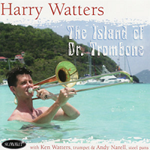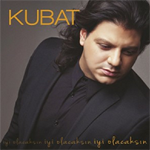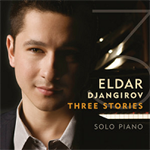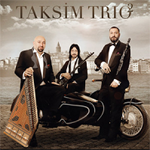This review page is supported in part by the sponsors whose ad banners are displayed below |
 |
 |
|
| For a personal overview on whether current mode was categorically better, I burnt through all the cans on hand. Curious whether the delta of difference would vary with load, I at first thought to qualify it with percentile numbers. But it turned out that things weren't quite as straightforward. Because the 4V AURALiC Vega sports 32-bit volume control, I trimmed up to 20dB of signal to expand the TKD's taper where needed. Source was my usual quad-core iMac with Audirvana 1.4.6 in integer mode 1 set to 352.8kHz upsampling. The Vega's clock was set to 'exact' and the digital filter to '4'. |
|
|
|
 |
Except for one all my cans preferred current mode. Even so the degree of advantage wasn't the same. Neither was the improvement always total. This latter qualification of overall better yet slightly worse in one aspect applied mostly to the HE500 and HE6 HifiMan planars. Their bass got looser. Especially with the HE6 this could approach bloated and a bit boomy. Of all my headphones I thought Fang Bian's most expensive to be the iffiest in current mode and not just on bass. To explain, let me paraphrase the key sonic difference. In voltage mode all surface textures of the musical action were matte. In current drive they grew shiny or outright glossy.
Don't think artificial Las Vegas glitz. Think current Apple displays. They sit behind polished glass. Earlier computers used plastic. The latest-gen displays have keener contrast, stronger colors, blacker blacks and greater depth. That's current drive. |
|
|
 |
| |
| In my AMP-11R review, I'd characterized a lesser version of this effect as "lit up all over. Valve fans have their own word. Illumination. Having owned many valve amps, I relate. Yet this quite extensive experience also has me see a certain area of inside-out radiation which valves surround with darkness. And there is no darkness with the 11R. As such there's no radiation. Light shines from the outside in and leaves out nothing. That's not bright. It's simply fully unconcealed and exactly why it requires minimum SPL to hear everything." I'd also said that "...fanciers of premium SETs—there's a vast swath from mediocre to brilliant, most somewhere in the lower middle—should relate to the electrifying immediacy. |
|
|
|
 |
"Naturally there are textural differences. Valves light up 'more reverb' by being more focused on the decay. Transistors go for the transients. Unlike much class D which acts overdamped particularly in the bass, the 11R is far less stiff if not as supple as an Emission Labs solid-plate 45. In the treble the Bakoon is very pellucid and wonderfully adept at tintinnabulation which the dictionary tells us is the ringing or sound of bells. Metal molecules scintillating, upper piano keys tinkling, violin flageolet climbing the harmonic ladder, very short pan flute pipes overblown at max air speed to capture even higher overtones - these and similar events the R11 executes brilliantly without getting flashy about it. I think that nonchalance is the elimination of phase shift in the upper frequencies." |
|
|
|
|
|
| While it's undeniably the case that being lit up all over makes for an unusually informative truly exploded treble—and current drive in the HPA-21 is an even higher octave thereof or like turbo boost over the AMP-11R—there's no brightness per se. That's because this shiny very direct quality encompasses the entire audible range. It's consistent, not specific. I simply find the HE6 quite bright already to distinctly prefer the cheaper more efficient HE500. Here current mode especially at high volumes became too glossy then. And for me that crossed the line into hyper intense. Now paler mellower voltage drive didn't seem boring but welcome and more natural. This was the one exception to the general rule that current mode always beat out voltage drive - playing the HE6 at very high levels. |
|
|
|
|
 |
In my collection the headphones which underwent the smallest sonic makeover from current drive were the AKG K-702 recabled by ALO Audio. They sounded excellent either way. Meanwhile the ALO-cabled Beyerdynamic T1 and T5p truly maximized current mode as though they were the concept's poster children for a flashy campaign. The Sennheiser HD-800 also ALO-cabled showed less overall gains but in particular their bass improved.
The ALO'd Audez'e LCD-2 also favored current drive but once more to a smaller degree than the Beyers. What surprised me with my favorite planars was how their well-known massively hung bass didn't get sloppy or overblown. |
|
|

|
|
| Answering my own question of why Bakoon even bothered with voltage drive, it's proof of concept and a built-in voicing option. Even though its colors are actually more muted, conventional voltage mode feels warmer. That illusion of warmth derives from reduced contrast. Current drive is more driven, taut, crystalline and ballsy as though transducer control had measurably improved. In those terms one could think of current mode as the day-time adrenaline option. That would make voltage mode the night-time comfort gear. Listening at very low levels makes current mode absolutely preferable. Its distortion is lower to increase magnification power and directness. You hear more with less. |
|
|
| |
|
 |
Listening at very high levels and particularly to overcooked sizzly Pop makes voltage drive more forgiving and thus benign. In current mode headphones with a built-in forward treble balance will seem even more imbalanced. 1MHz bandwidth creates rise times and phase linearity that leave nowhere to hide. All of this goes places tube amps couldn't even dream of. Lest previous semi parallels to valves conjured up a sense of likeness, the HPA-21 in overdrive sounds nothing like tubes!
To wrap up the question, having both modes isn't just a case of going beyond traditional voltage mode limitations by contrast. There will be loads, moods and music which make conventional drive preferable for various reasons even when preferable really doesn't mean better per se. |
|
|
|
|
|
| At $2.000 less than the fabulous AMP-11R but with novel current drive, headphones score appreciably higher with the HPA-21. In my personal hierarchy which is obviously limited by exposure, this parks the 21 atop the two-box 11R. That sat slightly above the Burson Conductor which sat atop the Eximus DP1. Illustrious company. Where the 21 adds usage over the others is with its built-in batteries. Connect Astell & Kern's iPod-crushing AK100 mini (preferably with Vinnie Rossi's mod to eliminate the stock 22Ω output resistors) and take your audio show on the balcony for some T&A. That'll be tunes 'n' air, preferably with rays. |
|
|
| |
|
 |
In my ongoing 32Ω audio coverage, I've routinely said that the best way to participate at the very top of the high-end game is with headfi. Eliminate the room for more linear predictable performance. Shrink speakers to tweeters in housings, amps to a fistful of watts. This compresses budget by a factor of 10. Nullify neighbors and schedules. Anything goes anytime! To approach the HPA-21 driven from a Vega-caliber source would cost very big the other way. To equal it without professional room tuning is impossible. The closest I'd come would be with the same DAC, then adding €10.700 for the Nagra Jazz, €10.000 for the FirstWatt SIT1, €20.000 for the soundkaos speakers, €5.000 for the Zu Submission, another €5.000+ for cables, cords and power conditioning and another €5.000 for acoustic resonators+. And still the headfi rig's linearity and hence fidelity would be superior. |
| |
|
|
With all my talk of lower distortion, higher res and grippier drive, you'd be forgiven for wondering about sensory overload. From a sonic wallpaper perspective that abuses music as noise fill, absolutely! This is about hearing everything and in full color. That's very intense. Participation isn't desired. No polite invitation. It's demanded. At sonic gun point. Density of raw data packed into expanded space between your ears; maximized extension toward the frequency extremes; how direct, crystalline and unavoidably unmistakable all of it becomes... it all puts a fat lie to propaganda. There's nothing wrong with good old 16/44.1 Redbook.
Once you hear the HPA-21 with a top can like the Audez'e LCD-2—I didn't have opportunity to sample the Fostex TH-900—you forget that greener grass on the hi-rezervation with its endless remasters of yesteryear's tunes. The Bakoon HPA-21 creates renewed appreciation for the 'ordinary' music we already own on ordinary shiny discs. It's a statement-level proposition at the very top of this game but for a fair price. Now let's see what Polish contributor Wojciech Pacuła had to say. |
|
|
|
 |
  |
 |